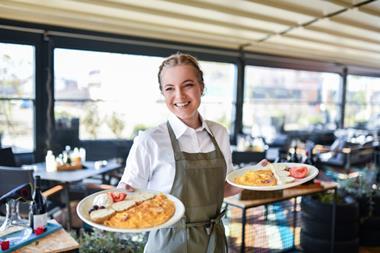Inside Track by Mark Stretton
It was intriguing this weekend to see Britain’s biggest brewer launch a very public broadside at the supermarket sector for retailing “cheap” alcohol.
In its submission to the Competition Commission, which is investigating the grocery market, Scottish & Newcastle said that supermarkets were encouraging irresponsible drinking through the pricing of alcohol, especially beer and cider.
It also said that with the upcoming smoking ban demand for alcohol to be consumed at home, would increase.
It is well documented that the supermarkets use popular alcoholic products as loss-leading footfall attracters. Often such items are priced at “below cost” – for less than they procure the items and at less than some pubs and bars can buy for.
The recent World Cup saw unprecedented levels of discounting this summer, with some beers priced at just a fifth or even a sixth of typical retail prices in pubs and bars.
The disparity between pricing in the on and off-trade has long been a concern for pub and bar operators but S&N’s decision to break ranks with the powerful supermarket fraternity will surprise many.
Perhaps it is starting to appreciate the incompatibility of knockdown discounting in supermarket aisles with high-brand equity and premium positioning in pubs and bars.
But the brewers have long been considered part of the problem by this industry – their pursuit of volume at the expense of price and margin in the off-trade is one of the single biggest contributing factors to declining volumes in the on trade.
Tim Clarke, chief executive of Mitchells & Butlers, recently told M&C: “The question the brewers must ask themselves is: do they want to be contract canners for the dominant supermarket groups or do they want to be brand builders?”
There is a growing sense in the eating and drinking-out market that the supermarkets also pose the biggest threat to the UK restaurant market.
It seems an obvious strategy but many in the eating-out market are focused on developing offers that are clearly differentiated and that cannot be easily replicated at home via a supermarket shelf.
Tony Hughes, Clarke’s colleague at M&B who heads up the group’s restaurant division, says: “The single biggest threat is not other restaurants but the supermarket groups.
“Our strategy is to differentiate. If we have offers and products that can be found in supermarkets, then the consumer will rightly seek the best price – and we will lose.”
The problem for the industry, and its suppliers, is that the consumer can rightly question what value a bar adds to a bottle of Budweiser or a J20 that is priced at five or six times the level available at Tesco.
The same applies to a deskilled food menu item that can be recreated via Tesco Finest or M&S Simply Food.
It is a problem for S&N, for all the brewers, it is a problem for Britvic and Coca-Cola, for 3663 and Brakes and everyone else that sells virtually identical products to the on-trade to those available in the nation’s supermarkets.
The process of differentiation is not new. It began long ago and is what separates the best concepts in the eating and drinking market – not just from each other, but from the grocers too.
The ability to continually differentiate from the grocers will increasingly become another signpost used to identify the winners and losers in this market.











































